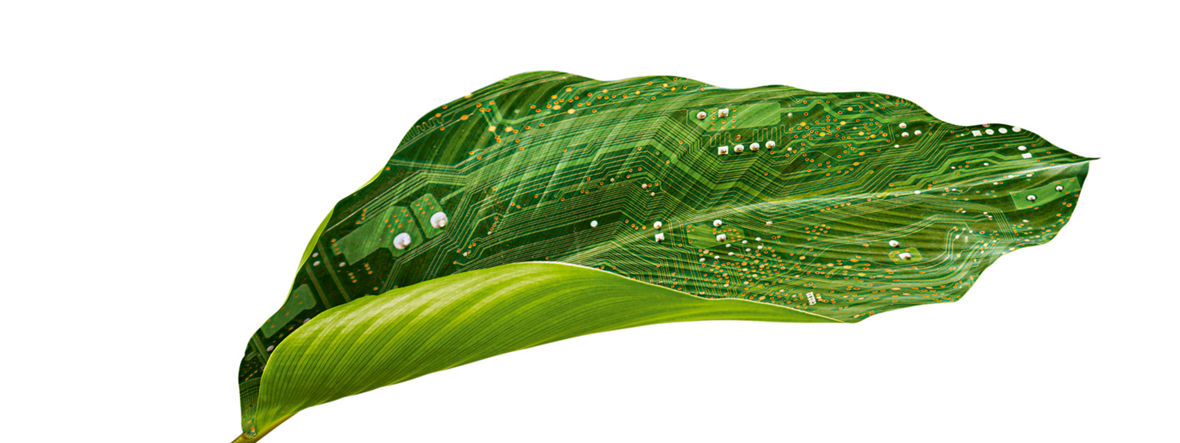In 1869 the Swiss biochemist Friedrich Miescher chose a pretty unappetizing method to obtain new findings: In the hospital of Tübingen, he gathered used dressings and rinsed out the white blood cells that were contained in the pus. He suspected that the substance in the cell nuclei plays a key role in biology. However, he couldn’t have imagined that his discovery, which he called “nuklein” (nucleic acid), was the genetic material.
People repeatedly underestimated the impact that the progress of biotechnology would have. It took another 84 years until James Watson and Francis Crick discovered DNA’s double helix structure. However, until the 1980s scientists thought it would be impossible to fully decode the human genome. Even after the Human Genome Project completed this mammoth task in 2003, most researchers thought that editing DNA in a targeted manner would never be possible. They were wrong again: Emmanuelle Charpentier and Jennifer Doudna presented the genome editing tool CRISPR-Cas9 in 2012, which enabled the genome to be changed with great precision.
“Throughout the history of biotechnology, every time a hurdle has been successfully taken, people thought the next one would be insurmountable, even though it was overcome just a little while later,” says Professor Stefan Buchholz, head of Research at Evonik’s Nutrition & Care division. Buchholz thinks that we have plenty of additional surprises in store. “Over the past decade, new high-throughput genome sequencing techniques have dramatically improved the costs and performance of DNA analysis,” he adds.
The pace of development is even outstripping that of Moore’s Law, which states that the number of transistors on a computer chip doubles approximately every 18 to 24 months, thus cutting the costs of computing in half. Although it still cost several hundred million dollars to sequence the human genome around 20 years ago, the price has now dropped to just over US$100. “The incredible dynamism of genetic research, combined with advances in automation, high-resolution imaging, artificial intelligence, and big data, is producing more and more innovations at an ever faster pace. As a result, biotechnology is increasingly moving into the business spotlight,” says Buchholz.

A NEW INDUSTRIAL REVOLUTION
According to Matthias Evers, a biotech expert and senior partner at McKinsey, the importance of biotechnology cannot be overestimated. “It is a key technology of the 21st century and, like digitalization, might trigger a new industrial revolution,” he says. In the report titled “The Bio Revolution,” which Evers co-authored in 2020, the McKinsey business consulting firm forecast that biological technologies could generate up to US$4 trillion of global added value annually by 2040. This enormous value added will be created by numerous processes, products, and methods that are currently still under development. Moreover, it will not be limited to the direct use of advanced genetic techniques.
Most recently, the successful development of vaccines against COVID-19 provided us with an inkling of the scientific and economic possibilities. Thanks to recent biotechnological innovations, the surfactants that have been used in detergents for decades have greatly improved in quality, enabling them to achieve the same washing performance at a much lower rate of energy consumption. As a result, laundry that used to be washed at 90 degrees Celsius can now be done at 30 degrees. Added to that are many pioneering innovations in the fields of nutrition, climate and environmental protection, and the production of sustainable materials. However, biotechnology does more than just enable the efficient production of active ingredients for food, animal feed, skin-compatible cosmetics, and environmentally friendly detergents and bioplastic. It also paves the way for making cultured meat, using bacteria in the mining industry, and refining bioethanol from sugar-rich plants.

»Biotechnology is increasingly moving into the business spotlight«
STEFAN BUCHHOLZ HEAD OF RESEARCH AT THE NUTRITION & CARE DIVISION
Red, Green and White
A color code has been established to differentiate the various areas of application. As a result, we now have red, green, and white biotechnology. Red biotechnology deals with medical applications, while green biotechnology involves plants, and white biotechnology relates to environmentally friendly, resource-conserving industrial production processes.
Evonik entered the field of white biotechnology all the way back in 1983, when experts at the company began to use biotechnology to produce the amino acid lysine, which is mainly used in animal feed. This production technique uses a microbiologically optimized strain of bacteria. When it is fed sugar, it produces the form of the amino acid that animals’ metabolism can use. Such processes, in which microorganisms produce huge amounts of a desired functional molecule, are referred to as fermentation.
The environmental benefit of these processes is that they use renewable raw materials and the products are generally biodegradable. As a result, the carbon that is required as a source of energy is recycled, and no fossil carbon is released into the atmosphere. This also makes biotechnology a key technology for a circular economy.
GETTING A BETTER UNDERSTANDING OF BIOTECHNOLOGY
Evonik now uses biotechnology in the form of fermentative and biocatalytic production processes in order to make essential amino acids, probiotics, dietary supplements, and pharmaceutical active ingredients. “Our activities focus on human life,” says Johann-Caspar Gammelin, head of the Nutrition & Care division. “Biotechnology is ideal for the production of complex molecules that can be used on people, in people, or for people.”
The experts at Evonik are also using the biotechnology platform to develop sustainable system solutions for cosmetics, cleaning agents, healthcare, and animal feed. Innovation is occurring particularly at the interfaces between biology, medicine, chemistry, and engineering. The Nutrition & Care division is now generating around 20 percent of its sales with products and services based on biotechnology, and this percentage is set to increase further.

As our understanding of biotechnology grows, more and more applications will be developed. For example, researchers at Evonik have developed an epigenetic analysis technique for chickens that, among other things, reveals their state of health. This could potentially be transferred to other livestock and provide farms with better data, thus supporting more sustainable meat production. Another promising new field is that of “yellow” biotechnology, which uses insects.
“We think that insect-based animal feed has great potential,” says Buchholz. As part of the InFeed research project, Buchholz’s colleagues are working on optimizing the nutrient composition of this especially protein-rich feed. The prospects that it will create a lucrative new area of business are very good, because the global market for insect protein is forecast to grow substantially over the next decade.
A SERVICE PROVIDER FOR THE BIOTECH INDUSTRY
The latest mRNA technology breakthrough in medicine also promises to generate strong growth. That’s because the manufacturers of the active ingredients need special technologies so that their compounds can be transported unharmed to the right places in the human body. To securely transport mRNA-based active ingredients, in which a ribonucleic acid transports the genetic information for the production of a specific protein into a cell, you need lipid nanoparticles (LNPs) composed of various lipids. Evonik is one of the world’s leading manufacturers of such lipids, and it is working together with scientists from Stanford University in California to create new processes that can transport the mRNA into cells with even greater precision in the future.
LESS ENVIRONMENTAL IMPACT
Fermentation and biocatalysis are promising options for the conservation of resources and the prevention of CO2 emissions. However, these technologies will only be successful on the market if they are also profitable. Proof that sustainability and profitability aren’t mutually exclusive is provided by the algal oil from Veramaris, a joint venture company that was founded by Evonik and the Dutch firm DSM. This product contains high concentrations of the omega-3 fatty acids EPA and DHA and it can replace the fish oil that has been used to date as a feed additive in salmon farming. This algal oil is produced in a fermenter and helps to ensure a secure supply of healthy animal protein. Moreover, it helps to protect the world’s excessively overfished oceans.

Biosurfactants, which are based on rhamnolipids, also have a positive impact on the environment. They are contained in cosmetics products, detergents, and dishwashing liquids. They are completely biodegradable within a short time, eliminate dirt as reliably as very good synthetic surfactants, and are extremely skin-friendly. Researchers accomplished a great feat when they decoded the rhamnolipid production mechanism in a bacterium that is toxic for human beings and transferred this mechanism to a harmless strain of bacteria. In large fermenters, this strain is now turning dextrose into the desired lipids at room temperature. Evonik is cooperating with the British consumer goods company Unilever in order to develop and upscale the production process.
Biotechnology pioneer Doug Cameron says that rhamnolipids are a great example of the transfer of biotechnological research results into practical applications. “This is where the strength of big companies is evident because they have a deep understanding of biotechnology as well as experience in building and operating large-scale chemical facilities, which enables them to commercialize the processes,” he says. Cameron used to be the chief scientist of the American agricultural and food corporation Cargill and is now co-president of the investment firm First Green Partners. “Although startups quickly develop exciting things in the laboratory, they often underestimate how much engineering expertise, time, and especially capital are needed to bring a production process to industrial maturity,” he adds.

Potential still underestimated
But that’s not the only reason why Cameron thinks that innovative chemical companies are in a good starting position. “In the future, some of the most exciting and sustainable processes will be those that intelligently combine biotechnology and chemistry,” he explains. Matthias Evers from McKinsey thinks that biotechnology’s cross-sector potential is underestimated. “For example, our analysis shows that up to 60 percent of raw and starting materials could be produced by biological means in the future,” he states.
However, this potential can only be fully exploited if European legislation regarding genetic engineering is updated. The regulatory hurdles are especially high if techniques such as the CRISPR genome editing tool are used, irrespective of the modified organism’s properties and what dangers it might actually pose. “These questions should be at the forefront,” says Evers. “Not the question about the technique used to create it.”
Buchholz is of a similar opinion. “An updated regulation would quicken the pace of research, promote the development of innovations, and at the same time ensure a high level of safety—it would be a classic winwin situation,” he says.
ELEMENTS-Newsletter
Receive exciting insights into Evonik's research and its social relevance - conveniently by e-mail.


